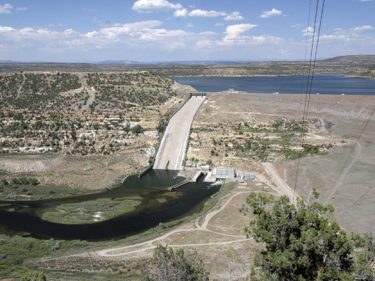
Thousands of dams built along U.S. rivers and streams over the last century now provide electricity for homes, store water for agriculture and support recreation for people. But they also have downstream impacts: They reduce the amount and change the timing of flowing water that fish rely on for spawning, feeding and migration.
Recognizing that many large dams are here to stay, a UW team is investigating an emerging solution to help achieve freshwater conservation goals by re-envisioning the ways in which water is released by dams. The hope is that “designer flows” downstream from dams can be tailored to meet the water needs of humans while promoting the success of native fishes over undesirable invasive fish species.
The team’s approach is described in a paper appearing Dec. 18 in Nature Communications.
“Rapidly changing water availability demands new dam management strategies to deliver water downstream that balances human and ecosystem needs,” said senior author Julian Olden, a UW professor of aquatic and fishery sciences.
Read more at UW Today »
